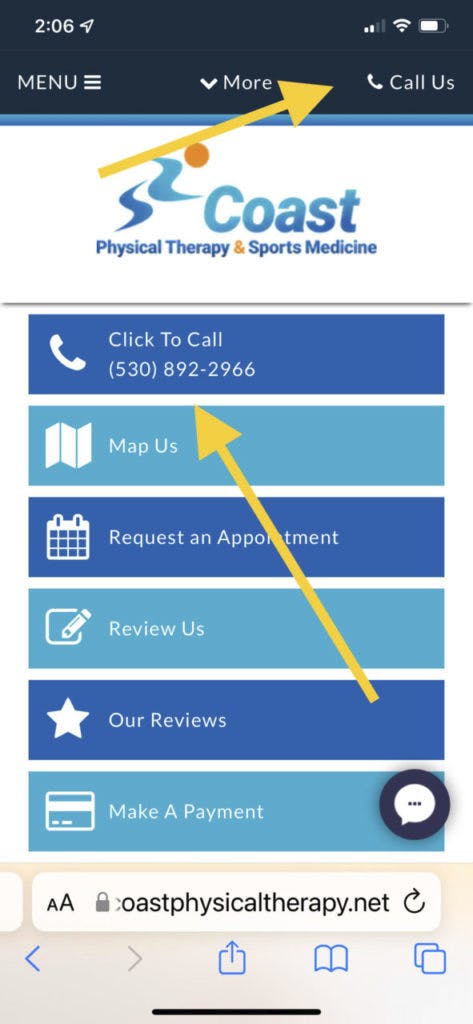2023 is just 6 weeks away. Are you preparing for next year?
Review these strategies and tactics so you can get some clarity on marketing, implement some of these easy strategies, and generate more new and repeat business.
- What is marketing – it’s finding someone with a need and getting them to know, like, and trust you.
- Marketing messages should first take into account your target marketing, the media they use, and the message should match their needs.
- The most common need for most orthopedic patients is singular – pain relief.
- The goal of marketing is to create campaigns that convert and help the practice grow.
- Marketing is not a linear process, but there are steps to follow in order to be successful.
- After you determine the market you wan to serve, the next step is to determine the offer.
- Researching the competition is important in order to understand the market and create a unique offer.
- The marketing message should be clear and speak to the target market’s pain points and needs.
- Different marketing channels should be tested to determine the most effective way to reach the target market.
- Marketing efforts should be measured and analyzed in order to continually improve and refine the campaign.
- You must learn to sell – the sales process should be streamlined and optimized to increase conversions.
- Marketing should not be viewed as a one-time event, but rather a system of continuous efforts.
- Building a community or network of loyal patients is important for long-term success.
- Physician referrals are one of the best opportunities to generate rapid new business. Are you doing this?
- Collaborating with local micro influencers can help reach a wider community audience.
- Storytelling on your website can be a powerful tool to engage and connect with potential patients.
- Offering value through free discovery visits, a phone call, or great content can help attract potential patients.
- Consistency in branding and messaging is crucial to building trust with the target market.
- Emotional appeal can be more effective than logical arguments in marketing (i.e. avoiding risky surgery or addiction).
- Patient reviews and video testimonials can be one of the most powerful ways to build credibility and trust. It’s a top 3 priority!
- Creating a sense of urgency can increase conversions by motivating the target market to take action. The longer you wait, the more costly care will be.
- Offering incentives movie tickets or a coffee card can encourage the past patients to refer to you.
- Using scarcity tactics, such as limited time offers or limited quantities, can increase demand for the offer.
- Personalization can be effective in making the target market feel valued and connected to the practice.
- Providing exceptional customer service can help build loyalty and encourage word-of-mouth marketing.
- Positioning – One way to position your practice – you always are “on time”.
- Offering free trials or demos can help potential patients experience the value of the offer before committing to including a cash treatment in a patient plan of care.
- Using social proof, such as showcasing the number of patients or followers, can increase the perceived value of the offer.
- Utilizing video marketing can help create an emotional connection with the target market.
- 80% of consumers will remember a video.
- Creating a sense of exclusivity, such as through a VIP program or limited edition offer, can get patients to come back. Do you have a VIP program?
- Utilizing email marketing can help build relationships and keep past patients informed about new offers or promotions.
- Checking in with all of your patients after 3-4 visits is a great way to keep them coming…assuming they still have the need for PT.
- It may be against your insurance contracts or your practice act, if not, offering a money-back guarantee can help increase conversions by eliminating risk for the target market.
- Creating a sense of urgency through countdown timers or limited availability can increase conversions on landing pages.
- Using scarcity tactics, such as limited time offers can help encourage patients take advantage of an offer.
- Offering bundle deals on your Facebook ads can help increase the perceived value of the offer.
- Utilizing content marketing can help attract potential patients through valuable and informative content – if you want to own a niche topic on Google, plan on publishing a lot of content. E-rehab has you covered here.
- Utilizing influencer marketing can help reach a wider audience and increase credibility.
- Having your name, address, and phone number above the fold will make it faster and easier for patients to connect with you.
- Having an easy to use appointment request system will generate more business – we’ve generated over 100,000 appointments for our clients since we started measuring a few years ago.
- Quick access buttons will generate calls – make it easy to click and call on your website. We’ve generated over 600,000 calls for our clients since we started measuring a few years ago.
- Email marketing content should include both educational information and will keep you top-of-mind.
- Email marketing still provides the best ROI – if you’re not doing it, you’re missing out on a fundamental strategy.
- Optimize your Google Business Profile – include all of the different categories of service you provide.
- Using technology to capture reviews is the best way to NOT get them. Have a system in place to capture reviews.
- Social media posts from PT practices, get on average, less than 1% engagement. Not one of the top priorities – yes, not a top 7 priority.
- Google Ads can generate 5-10 new patients per month but you must test.
- You should be capturing and recording calls when running Google Ads.
- Does your receptionist make a great first impression and ask the Golden Question of each no prospect, “How soon can you come in?”
If you have questions or want to know how E-rehab.com can help you, give us a call at (760) 585-9097 or schedule some time by clicking here.




















